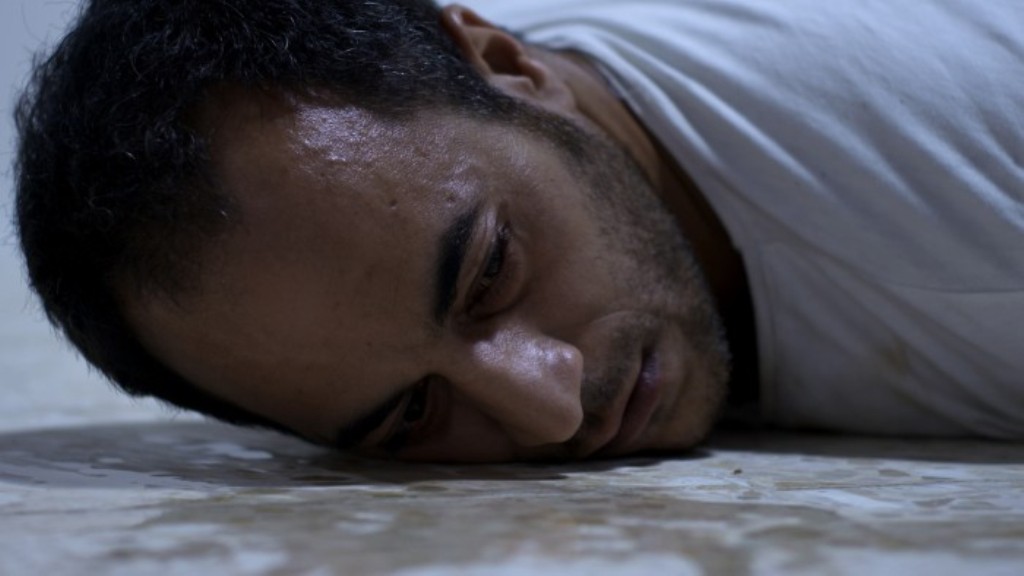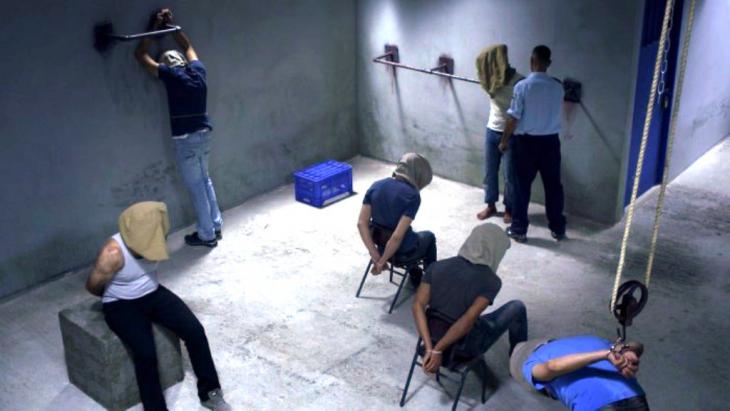The ghosts that lurk

The bombshell comes right at the end with the closing credits: currently there are around 7000 Palestinian men and women sitting in Israeli prisons. What is more, some 750,000 Palestinians have been imprisoned since 1967 and the start of the Israeli occupation of Gaza, the West Bank and East Jerusalem. Most were sentenced by military courts, while others were held without any judgement as so-called "security prisoners." There are practically no Palestinian families that have been spared the experience of prison.
It is not, however Raed Andoni's mission to collect or verify facts. This is the job of international, Israeli and Palestinian human rights organisations. Andoni approaches his subject in his own artistic and cinematographic way. His concern is to find a release for the trauma and emotions – the "ghosts" – that haunt former prisoners to this day. It is not only about the collective Palestinian experience of imprisonment, but essentially about the individual human experience of imprisonment, the violence and humiliation it inflicts and its long-term consequences.
What does such an extreme experience do to a person? During the first intifada in the late 1980s, as thousands of Palestinians protesting against the occupation were arrested, Raed Andoni himself was imprisoned.
Former prisoners as actors
"The story begins with my own ghosts," says Andoni. "It was a matter of retrieving suppressed emotions that lay hidden in me and in all those who have endured such experiences." The director turned to newspaper ads as he set out to find a group of former inmates able to work as set designers and craftsmen in recreating a prison on the film set. He also sought out ex-detainees willing to play the roles of prison wardens and prisoners. And so this group of people, who had themselves experienced imprisonment, began to meticulously build their own prison. Most had spent time in the so-called "Russian Compound" in Jerusalem, Israel's notorious Moskobiya interrogation and detention centre.
This process elicited various emotions. The former prisoners felt as if they had somehow been taken back to their time in detention. In the seven weeks of intensive collaboration on the set, the camera captured a horrifyingly realistic prison backdrop with an almost affectionate dedication to detail. Many of the film's scenes reconstruct everyday life in prison and confront the experience through a variety of artistic forms. For instance, the acoustics on the set, employed so impressively in the film, manage to reproduce those intense sounds within the prison: its silence, the slamming of cell doors and the bellowing of wardens.
The set was precisely planned and constructed, just as others might plan and build their apartment or house. The experience of prison as a physical location had left deep impressions on the film's participants. Although they had been released from their physical confines, they bear the memories of that place for a lifetime. It seems that by reconstructing the site of their detention, the former inmates deconstruct and dismantle a part of their trauma. The cast and technicians literally worked out their problems on the set. They all underwent different experiences that had been suppressed to some extent or another.
No room for reflection
Those who have suffered detention must conform to the prevalent stereotype of the "strong man" and accept the hero worship of Palestinian prisoners. According to Andoni, former prisoners find no room for reflection in Palestinian society. As a result, the suppressed memories returned with an even greater intensity on the film set. One of the protagonists was visibly relieved after having spoken about his terrible experiences. While stuck in prison, he could not prevent the suicide of his brother and suffered massive feelings of guilt as a result. Recollections by other members of the crew evoked nightmares and panic attacks.
"You have to work through the things that burden you, or they will finish you," says Andoni. Despite this, the director suffered something of a guilty conscience for what he put his crew through. "But I didn't lock them in – they could leave any time they liked or continue the project to the end," he says. A Palestinian psychologist was on set to support and supervise the crew. Andoni laboured two years on the script, but in the end, the scenes on set were improvised. As a result, all boundaries became blurred. Was the project a documentary or a feature film, a social experiment or group therapy, reality or fiction?
Equally, the boundaries between the roles of prisoners and guards were also blurred. All of the actors had experienced imprisonment and every single one has been traumatised, but everyone deals with this in their own way. In the process, they all became involuntary experts – prison experts, torture experts, experts on interrogation techniques and experts in humiliation. Recalling their own experiences and observations of Israeli prison wardens and interrogators, they internalised the gestures and actions of their captors and were easily able to reproduce them at a moment's notice. In those scenes featuring both prisoners and guards, the performances of actors playing guards is particularly convincing. The actors even employ the Hebrew slang that they all learned in prison.

In horrifying scenes, actors playing prisoners can be seen wearing sacks over their heads, being tightly bound, or having to stand in awkward and painful positions. When scenes called for actors to use the kind violence that they had previously experienced first hand, when they had to humiliate or scream at fellow crew members playing prisoners, or when they had to go completely berserk and lose all control, it became clear what kind of "ghosts" were still lurking in their souls. A number of scenes had to be stopped before they escalated into real violence.
Universal story about human power and its abuse
This is a Palestinian story, but it is also a universal tale of human power and its abuse. The classic "Stanford Prison Experiment" demonstrated just how quickly people are able to identify with the role of the violent prison guard. Raed Andoni, however, goes far beyond this level of sociological analysis. He is a filmmaker and has produced a fabulous work of cinema. He offers viewers a profoundly human, autobiographical approach to accessing this topic.
Abhorrent as the experience was, Andoni nonetheless describes his own imprisonment as his first real lesson in filmmaking. The extreme experience forces one to rely on imagination to break out of the realities of prison and to survive.
A number of the former detainees on the film set reported how the ability to fantasise helped them survive their time in prison – how close family members or even newly born children could appear to be physically present. In one animated scene, a prisoner dreams himself into a fantastical world, just as Raed Andoni did as an 18-year-old detainee. "Back then, I was not a filmmaker. But the experience had something fundamental in common with the nature of cinema."
Andoni's film also works because he has discovered such wonderful characters. "My golden rule is that I only work with people that I like. Otherwise I lack the passion and energy that is needed to make a good film." The protagonists succeeded in welding the project together. For all those involved, the experience was hard, but enriching, inspiring and funny. Even as detainees, they had laughed, as humour is key to surviving in prison. They all shared in the same experience, despite being completely different in character.
By giving the actors and crew room to express themselves, Andoni's film manages to avoid cliches. In no way is the film limited to the observation of suffering or the re-enactment of victimisation. Raed Andoni's film functions as both trauma therapy and as an opportunity to discuss the political problem of prisoners. First and foremost, though, the film works as an impressive piece of cinematography dealing with the basic questions of the human condition.
Rene Wildangel
© Qantara.de 2017
Translated from the German by John Bergeron